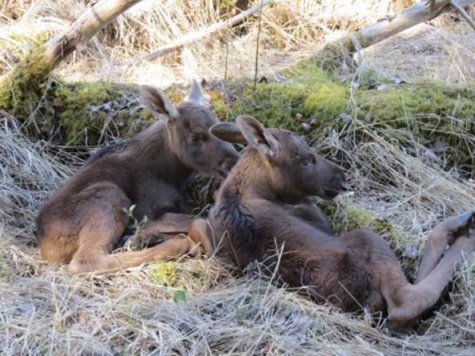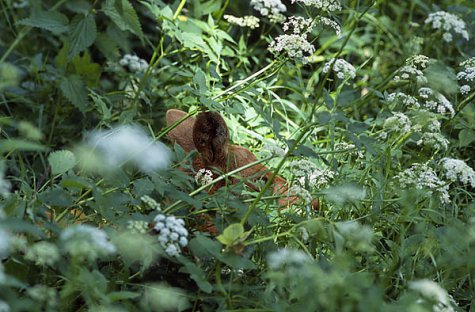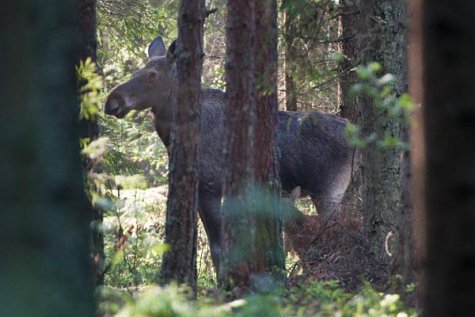Elk calves are May kids
Photos Jaan Mitt and Arne Ader
Translation Liis
Two or three days old elk calves whom Jaan had to leave quickly after getting the photo
Elk; Moose (N. America) Põder Alces alces
In the Estonian forests the first elk cows had calves already in the last week of April; the elk population expands with new members during the whole month of May.
Young elk cows, a couple of years old and calving for the first time, generally have one calf. With increasing age and good nutrition she can bear two, or very rarely three, calves. The weight at birth of the newly-born varies quite strongly, ranging between 6 and 16 kilos. The enterprising calves almost immediately start to nibble grass in addition to the mother’s milk. In case of danger they lie motionless in the grass. Already at a few weeks of age they run faster than a human and at three weeks they start to chew tree sprigs…
Elk calf in grass
Depending on its age an elk calf consumes up to a couple of litres of milk per day and the elk cow suckles them until late autumn; by that time the calves already weigh well over a hundred kilos.
In Russia elk farms have been kept for decades and so the nutritional values of elk milk has been studied: In May – June the fat percentage of the milk is about 8-13%, the protein content 12-16%, and the yield up to 7 litres a day. The numbers can be compared to those of cow milk on a pack of milk at home.
Should you happen to meet elk calves in the forest now it is wiser to retreat. The cow often leaves her ”baby” to rest and comes to suckle it until the calf is ready to move with her. A solitary elk calf should not be regarded as an orphan or as rejected. The big creatures know their territory well, including the threats there .
Elk cow with her calf
Before calving the elk cow forced the calf of last year who had been keeping company with her during winter to start an independent life. The yearling calves must now manage on their own. Spring and early summer is the period when inexperienced young elks stray into human settlements. They are looking for suitable territories for themselves, crossing motor roads at night and sometimes not able to return to their familiar forest in the heavy traffic in daytime. They lose their orientation from stress and so all kinds of confusions and accidents happen, as can be read in the newspapers.
Elk bulls grow horns that are covered with soft skin. The one-year olds still have unbranched so-called ”stick antlers” this year.











